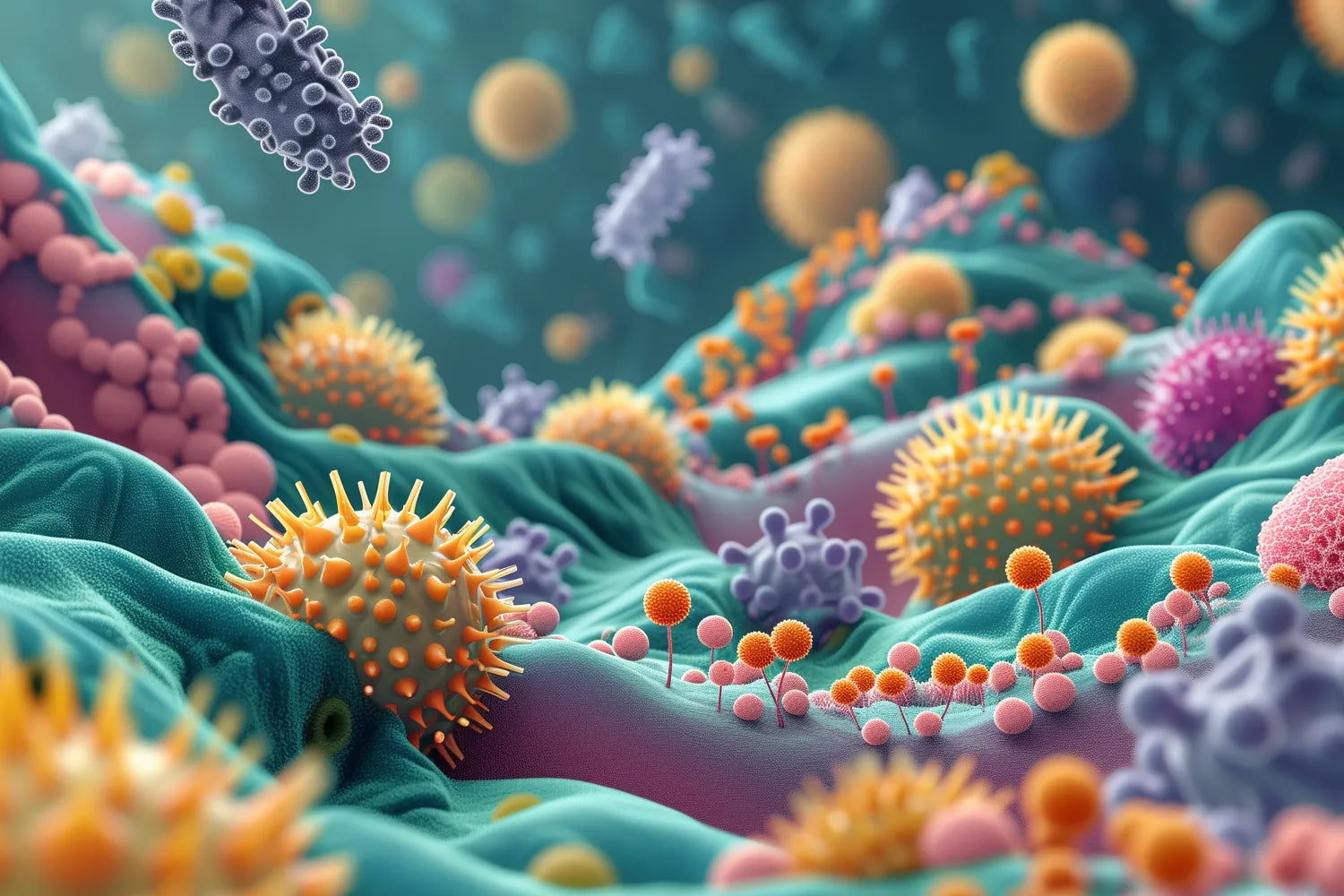
Dr. Eric Venn-Watson’s Highlights
-
- Scurvy is a condition a person can develop when they have a severe dietary vitamin C deficiency due to a lack of a balanced diet. Once thought of as a condition of the past, recent cases have been increasing in some populations.
- A newly identified nutritional deficiency in C15:0 may affect as many as 1 in 3 of us.
- Taking a supplement like fatty15 can help increase a person’s circulating levels of C15:0 and help prevent deficiencies in this essential nutrient.
What Is Scurvy?
It’s likely that your only knowledge of scurvy comes from a medical journal or a story about pirates. Long ago, they were the most vulnerable sect of the population because, while on long voyages, they had very limited access to fresh fruits and vegetables that contained the essential nutrient vitamin C.
Scurvy itself is a condition occurring from severe vitamin C deficiency. This occurs over a long period when a person is deprived of vitamin C. That means if you miss a glass of orange juice one morning, you aren’t at risk. However, over time, people who lack adequate access to fresh fruits, vegetables, and proper medical care can develop scurvy.
What Are the Risk Factors for Scurvy?
Living in a developed country, it is less likely you will be at risk of developing scurvy, but certain groups are at higher risk. People in underdeveloped nations may develop scurvy more frequently, as they often do not have adequate access to high-quality nutritional sources, like fruits and vegetables. In developed countries, Vitamin C deficiencies are often due to restrictive diets or underlying medical conditions.
Low-Income Families
Families or individuals who do not have the means to acquire good sources of healthy foods are at higher risk of developing vitamin deficiencies than those with the means. People who live in so-called “food deserts” may also be at higher risk.
Food deserts are places in developed nations where access to affordable, healthy foods is limited. Instead, people only have access to foods that are not nutrient-dense and contain unhealthy amounts of empty calories.
In addition, low-income families may struggle to find accessible, affordable healthcare that can monitor for dietary deficiencies and ensure that if one occurs, they can make a full recovery.
People With Disordered Eating
A person suffering from anorexia nervosa or bulimia may not get the nutrients they need to thrive and could be at risk of developing scurvy. In addition, people who do not necessarily suffer from an eating disorder but who eat extremely restrictive diets that eliminate entire food groups may also be at risk.
Illness
Illness can lead to a poor diet. Chemotherapy patients may lose their appetites altogether, while other illnesses and associated treatments may do the same. Even some weight loss surgeries could lead to scurvy if the diet is not properly maintained after the surgery.
Smoking, Drug, and Alcohol Use
Long-term effects of smoking may result in scurvy, as smoking decreases the levels of vitamin C in the body. In addition, dependency on illicit drugs or alcohol may also increase the risk of scurvy by affecting a person’s overall diet, making it hard for them to get enough vitamin C.
Age, Pregnancy, and Nursing
Babies, children, and the elderly are more at risk for scurvy because it is typically harder for them to maintain a healthy diet. In addition, pregnant and breastfeeding mothers may also be at risk because the body needs more vitamin C during these times.
Even with these risk factors, it is still unlikely that a healthy person will get scurvy. With access to medical care and numerous sources of vitamin C, most people living in a developed nation will not need to worry about scurvy.
Symptoms of Scurvy
If you do have scurvy, your dentist may notice it first. The symptoms of scurvy usually appear after three to four months with a lack of vitamin C in the diet. One of the first symptoms is bleeding gums, which may lead your dentist to ask you about your oral care routine.
Other symptoms include:
-
Permanent teeth that become loose or fall out. This usually happens along with bleeding, swollen, tender gums.
-
Feeling tired, weak, and lethargic for an extended period of time.
-
Irritability and sadness that don’t go away after two weeks.
-
The development of red or blue spots on the skin. Keep in mind that it may be harder to see these on dark skin tones. These are known as petechiae.
-
Corkscrew hairs, or hairs that wind and twist from the hair follicle.
-
Bruising easily.
-
Poor wound healing.
-
Joint, muscle, connective tissue, and bone pain that occurs for no apparent injury or reason (referred to as myalgia).
-
Neuropathy. This affects the nerves in the extremities, like the hands and feet, and usually happens as the scurvyprogresses.
-
Weight loss. Keep in mind, however, that in some cases, weight loss might be an underlying side effect of something else (like weight loss surgery or medical treatment).
If a person develops scurvy, it’s likely they may also be suffering from other vitamin deficiencies as well. They may also be more likely to develop anemia, a condition where iron levels are too low. A simple blood test is all that is needed to determine whether or not a person has scurvy.
How Common Is Scurvy?
As previously mentioned, access to plentiful foods and dietary supplements prevents most healthy people from getting scurvy. Although it is thought of as a rare condition, according to the CDC, 10-17% of low-income people suffer from scurvy.
Still, it is much more likely that a person with a standard American diet will develop negative health impacts due to overconsumption of calories, sugar, and unhealthy fats. While scurvy might not be a major concern, heart disease, type 2 diabetes, unregulated cholesterol, and high blood pressure are all common illnesses in the United States.
Getting What We Need
The majority of the American population has access to plenty of citrus fruits and high vitamin C veggies like Brussels sprouts and broccoli, or at the very least can take a vitamin C supplement, many of us still don’t get the dietary nutrients we need in the right quantities.
Macronutrients like protein, fat, and carbohydrates are the foundations of our diets and the vehicles through which we get micronutrients. Micronutrients are the essential vitamins and minerals our bodies need to thrive.
Essential means we have to have them, but our bodies can’t make them on their own. We have to get them from food or supplements.
A New Nutrient Deficiency
While most of us get more than what we need, one nutrient we may be deficient in could be the key to helping us support our long-term health, especially as we age. Many of us are deficient because dietary guidelines in the 1970s told us to avoid all saturated fat to avoid heart attacks.
This little nutrient called C15:0 is an essential saturated fatty acid found in trace amounts in full-fat dairy products. That means those of us who grew up in skim milk households or who use plant-based milk void of this fatty acid are likely not getting enough of it.
What Is C15:0?
C15:0 is an odd-chain, essential saturated fatty acid that was discovered by scientists focused on helping bottlenose dolphins live healthier for longer. These scientists discovered that dolphins who had higher circulating levels of this fatty acid had fewer occurrences of age-related illness and lived longer, healthier lives.
They took their research further and published their findings in 2020. As it turns out, not all saturated fats are bad. In fact, some are essential to maintain our health and wellness.
Why Is C15:0 Essential?
C15:0 is essential because our bodies need it to maintain our health and cannot make enough of it. Meaning we need to get C15:0 from our diet. C15:0 works by protecting our health at the cellular level. The foundations of our health lie in our cells; if our cells are not healthy, by extension, we are not healthy.
C15:0 dives deep into cells to:
- Strengthen cellular membranes. Cell membranes protect our cells and keep them strong. As we age, these membranes become flimsy and weak. C15:0 is a sturdy fatty acid that armors our cell membranes against age-related breakdown. Studies have shown that pure C15:0 improves cellular strength by 80%.
- Clear damaged cells. C15:0 activates AMPK, which helps to clear out damaged cells.
- Regulate inflammatory response. C15:0 significantly calms and lowers proinflammatory cytokines, a key driver of aging. AMPK also works to regulate whole-body homeostasis and regulates glucose uptake.
- Rescue energy-generating pathways. C15:0 repairs mitochondrial function, increasing our cell’s energy output and decreasing damaging reactive oxygen species by 45%. The mitochondria in our cells may not function as well as with age, but in one peer-reviewed study, C15:0 was shown to increase ATP levels in cells by 350%.
- Activate PPARɑ and PPARẟ receptors. By activating these receptors, known as the ‘orchestrators of our metabolism,’ C15:0 supports metabolic, immune, heart, and liver health. These receptors also help to improve mood and deepen sleep.
Without C15:0, our cells lose their strength and don’t function as well. If you’re thinking, “I already take a fatty acid. I take a fish oil supplement,” there are some other things to consider.
More Than Omega
We all know that omega-3s have long been hailed as an essential fatty acid. While it’s true that one omega-3 (ALA) is essential, most of us get the amounts of this we need through our diets. In addition, omega-3 in large doses is associated with side effects, such as elevated blood sugar, bleeding, and, of course, the fish burps and diarrhea associated with fish oil supplements. In studies that compared omega-3 to C15:0, C15:0 was found to have more clinically relevant benefits and be safer for our cells than the purest and most potent form of omega-3.
Getting C15:0
Elevate your cells. Elevate your self.
Buy NowWe can get our daily requirements of C15:0 from foods or from supplements. Unfortunately, increasing one's intake of whole-fat dairy products also means adding additional calories and unhealthy even-chain saturated fats. A better option may be to take the only pure powder (non-oil), plant-based, sustainably produced, and award-winning C15:0 supplement called fatty15.
It’s Readily Absorbable
Why take fatty15? In addition to skipping the cows and the calories, there are a few additional reasons why taking fatty15 to obtain this essential fatty acid may be beneficial.
First, fatty15 is made ready to absorb. In milk (and other foods), C15:0 is attached to branches of lipids called triacylglycerides, aka triglycerides. That means our gut has to use digestive enzymes to break down these triacylglycerides to release C15:0 as a free fatty acid.
Once C15:0 is released, it is ready to be absorbed. These multiple steps can make our absorption of C15:0 from foods less efficient. In contrast, fatty15 is made of C15:0 already in a bioavailable free fatty acid form. Less work for the gut, more good C15:0 for our bodies.
It’s a Solo Hero
Fatty15 contains a single pure, C15:0 ingredient that isn’t mixed with the bad, proinflammatory, saturated fats. Just the good fat, without the bad.
Fatty15®: Your Source To Address C15:0 Nutritional Deficiencies
A growing body of evidence supports that C15:0 deficiencies may be contributing to liver injury in as many as 1 in 3 of us. There is a global call to action to further define C15:0 nutritional deficiencies and establish minimum daily requirements for C15:0.
Fortunately, there is a solution. Fatty15 offers a pure powder (non-oil), sustainably produced, and award-winning supplement to restore your C15:0 levels. This readily absorbable, one-calorie per capsule supplement is your key to getting your C15:0 levels higher and improving your overall health.
Sources:
Not just pirates anymore: Scurvy afflicts the poor and homeless|Stat News.com
An Unremitting Rash after Gastric Bypass Surgery 921|Journals.LLW.com

Eric Venn-Watson M.D.
CEO, Co-Founder
Senior Scientist, Co-Founder
Eric is a physician, U.S. Navy veteran, and Co-founder and COO of Seraphina Therapeutics. Eric served over 25 years as a Navy and Marine Corps physician, working with the special forces community to improve their health and fitness. Seraphina Therapeutics is a health and wellness company dedicated to advancing global health through the discovery of essential fatty acids and micronutrient therapeutics.
You May Also Like...
10 Foods Good for Your Liver: The Ultimate Guide
Your liver does a lot for you. If it had a voice of its own, it might ask you to eat more veggies and cut back on your Old Fashioneds. Unfortunately, the liver doesn’t receive a lot of attention until...
How To Improve Your Gut Microbiome: 6 Tips
Interested in how to improve your gut microbiome? We’ve got six tips to help your gut thrive and improve your overall digestion.


